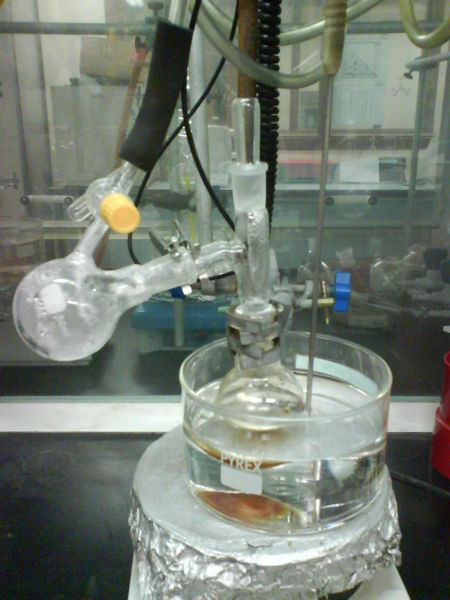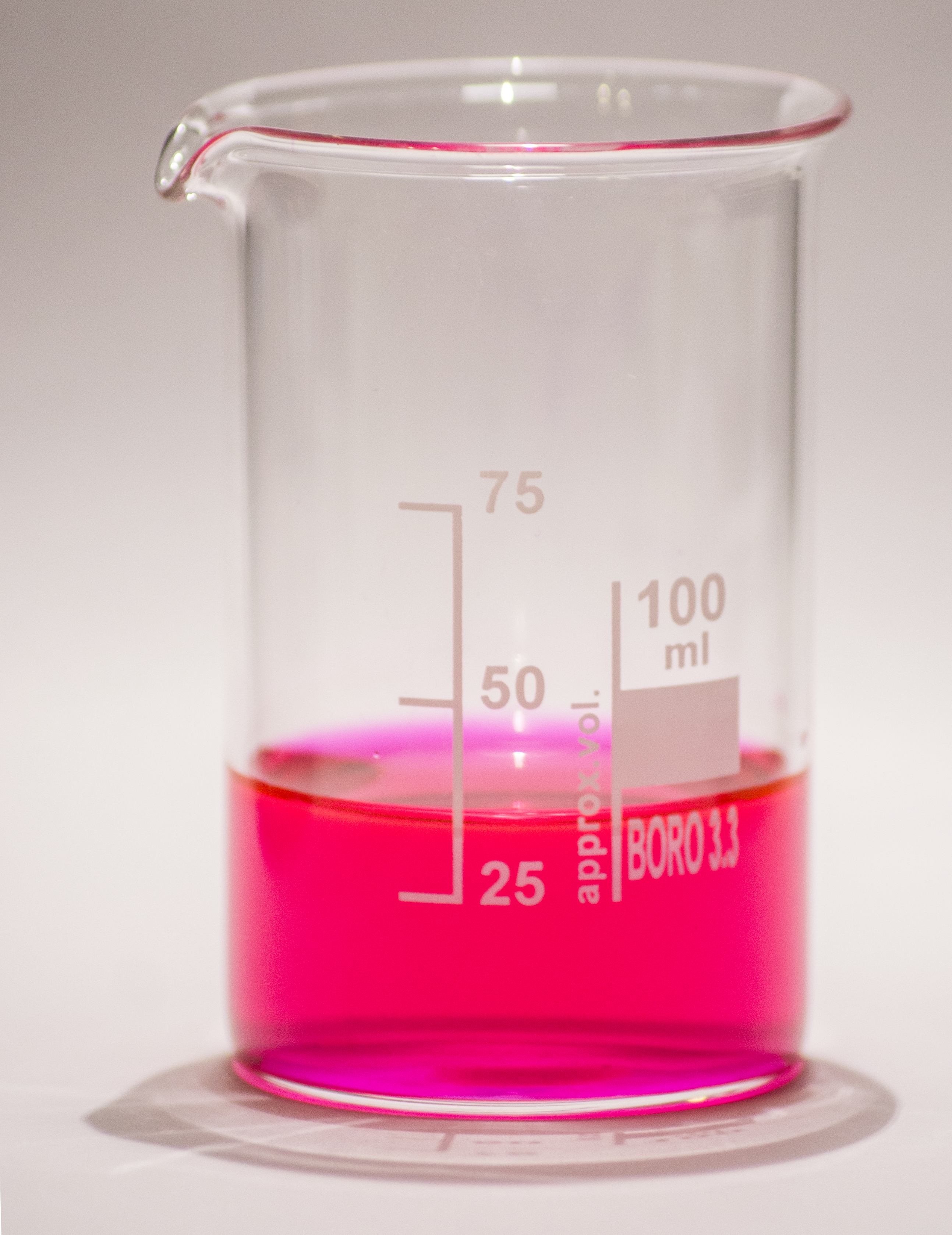|
Canary Yellow
Auramine O is a diarylmethane dye used as a fluorescent stain. In its pure form, Auramine O appears as yellow needle crystals. It is insoluble in water and soluble in ethanol and DMSO. Auramine O can be used to stain acid-fast bacteria (e.g. ''Mycobacterium'', where it binds to the mycolic acid in its cell wall) in a way similar to Ziehl–Neelsen stain. It can also be used as a fluorescent version of the Schiff reagent. Auramine O can be used together with Rhodamine B as the Truant auramine-rhodamine stain for ''Mycobacterium tuberculosis''. It can be also used as an antiseptic An antiseptic ( and ) is an antimicrobial substance or compound that is applied to living tissue to reduce the possibility of sepsis, infection, or putrefaction. Antiseptics are generally distinguished from ''antibiotics'' by the latter's abil ... agent. References External links Auramine O spectra data {{Stains Diarylmethane dyes Staining dyes Antiseptics Hydrochlorides ... [...More Info...] [...Related Items...] OR: [Wikipedia] [Google] [Baidu] |
Stain (biology)
Staining is a technique used to enhance contrast in samples, generally at the microscopic level. Stains and dyes are frequently used in histology (microscopic study of biological tissues), in cytology (microscopic study of cells), and in the medical fields of histopathology, hematology, and cytopathology that focus on the study and diagnoses of diseases at the microscopic level. Stains may be used to define biological tissues (highlighting, for example, muscle fibers or connective tissue), cell populations (classifying different blood cells), or organelles within individual cells. In biochemistry, it involves adding a class-specific (DNA, proteins, lipids, carbohydrates) dye to a substrate to qualify or quantify the presence of a specific compound. Staining and fluorescent tagging can serve similar purposes. Biological staining is also used to mark cells in flow cytometry, and to flag proteins or nucleic acids in gel electrophoresis. Light microscopes are used for viewing s ... [...More Info...] [...Related Items...] OR: [Wikipedia] [Google] [Baidu] |
Ethanol
Ethanol (also called ethyl alcohol, grain alcohol, drinking alcohol, or simply alcohol) is an organic compound with the chemical formula . It is an Alcohol (chemistry), alcohol, with its formula also written as , or EtOH, where Et is the pseudoelement symbol for ethyl group, ethyl. Ethanol is a Volatility (chemistry), volatile, flammable, colorless liquid with a characteristic wine-like odor and pungent taste. As a psychoactive depressant, it is the active ingredient in alcoholic beverages, and the second most consumed drug globally behind caffeine. Ethanol is naturally produced by the fermentation process of sugars by yeasts or via petrochemical processes such as ethylene hydration. Historically it was used as a general anesthetic, and has modern medical applications as an antiseptic, disinfectant, solvent for some medications, and antidote for methanol poisoning and ethylene glycol poisoning. It is used as a chemical solvent and in the Chemical synthesis, synthesis of orga ... [...More Info...] [...Related Items...] OR: [Wikipedia] [Google] [Baidu] |
Dimethyl Sulfoxide
Dimethyl sulfoxide (DMSO) is an organosulfur compound with the formula . This colorless liquid is the sulfoxide most widely used commercially. It is an important polar aprotic solvent that dissolves both polar and nonpolar compounds and is miscible in a wide range of organic solvents as well as water. It has a relatively high boiling point. DMSO is metabolised to compounds that leave a garlic-like taste in the mouth after DMSO is absorbed by skin. In terms of chemical structure, the molecule has idealized Cs symmetry. It has a trigonal pyramidal molecular geometry consistent with other three-coordinate S(IV) compounds, with a nonbonded electron pair on the approximately tetrahedral sulfur atom. Synthesis and production Dimethyl sulfoxide was first synthesized in 1866 by the Russian scientist Alexander Zaytsev, who reported his findings in 1867. Its modern use as an industrial solvent began through popularization by Thor Smedslund at the Stepan Chemical Company. Dimeth ... [...More Info...] [...Related Items...] OR: [Wikipedia] [Google] [Baidu] |
Acid-fast
Acid-fastness is a physical property of certain bacterial and eukaryotic cells, as well as some sub-cellular structures, specifically their resistance to decolorization by acids during laboratory staining procedures. Once stained as part of a sample, these organisms can resist the acid and/or ethanol-based decolorization procedures common in many staining protocols, hence the name ''acid-fast''. The mechanisms of acid-fastness vary by species although the most well-known example is in the genus ''Mycobacterium'', which includes the species responsible for tuberculosis and leprosy. The acid-fastness of ''Mycobacteria'' is due to the high mycolic acid content of their cell walls, which is responsible for the staining pattern of poor absorption followed by high retention. Some bacteria may also be partially acid-fast, such as ''Nocardia''. Acid-fast organisms are difficult to characterize using standard microbiological techniques, though they can be stained using concentrated dyes ... [...More Info...] [...Related Items...] OR: [Wikipedia] [Google] [Baidu] |
Mycobacterium
''Mycobacterium'' is a genus of over 190 species in the phylum Actinomycetota, assigned its own family, Mycobacteriaceae. This genus includes pathogens known to cause serious diseases in mammals, including tuberculosis (''Mycobacterium tuberculosis, M. tuberculosis'') and leprosy (''Mycobacterium leprae, M. leprae'') in humans. The Greek language, Greek prefix ''myco-'' means 'fungus', alluding to this genus' Mold (fungus), mold-like colony surfaces. Since this genus has cell walls with a waxy lipid-rich outer layer containing high concentrations of mycolic acid, acid-fast staining is used to emphasize their resistance to acids, compared to other cell types. Mycobacterial species are generally aerobic, non-motile, and capable of growing with minimal nutrition. The genus is divided based on each species' pigment production and growth rate. While most ''Mycobacterium'' species are non-pathogenic, the genus' characteristic complex cell wall contributes to evasion from host defenses. ... [...More Info...] [...Related Items...] OR: [Wikipedia] [Google] [Baidu] |
Mycolic Acid
Mycolic acids are long fatty acids found in the cell walls of Mycobacteriales taxon, a group of bacteria that includes ''Mycobacterium tuberculosis'', the causative agent of the disease tuberculosis. They form the major component of the cell wall of many Mycobacteriales species. Despite their name, mycolic acids have no biological link to fungi; the name arises from the filamentous appearance their presence gives Mycobacteriales under high magnification. The presence of mycolic acids in the cell wall also gives Mycobacteriales a distinct gross morphological trait known as " cording". Mycolic acids were first isolated by Stodola ''et al.'' in 1938 from an extract of ''M. tuberculosis''. Mycolic acids are composed of a longer beta-hydroxy chain with a shorter alpha-alkyl side chain. Each molecule contains between 60 and 90 carbon atoms. The exact number of carbons varies by species and can be used as an identification aid. Most mycolic acids also contain various functional gr ... [...More Info...] [...Related Items...] OR: [Wikipedia] [Google] [Baidu] |
Ziehl–Neelsen Stain
The Ziehl-Neelsen stain, also known as the acid-fast stain, is a bacteriological staining technique used in cytopathology and microbiology to identify acid-fast bacteria under microscopy, particularly members of the ''Mycobacterium'' genus. This staining method was initially introduced by Paul Ehrlich (1854–1915) and subsequently modified by the German bacteriologists Franz Ziehl (1859–1926) and Friedrich Neelsen (1854–1898) during the late 19th century. The acid-fast staining method, in conjunction with auramine phenol staining, serves as the standard diagnostic tool and is widely accessible for rapidly diagnosing tuberculosis (caused by ''Mycobacterium tuberculosis'') and other diseases caused by atypical mycobacteria, such as leprosy (caused by ''Mycobacterium leprae'') and ''Mycobacterium avium-intracellulare'' infection (caused by ''Mycobacterium avium'' complex) in samples like sputum, gastric washing fluid, and bronchoalveolar lavage fluid. These acid-fast bact ... [...More Info...] [...Related Items...] OR: [Wikipedia] [Google] [Baidu] |
Schiff Reagent
: The Schiff test is an early organic chemistry named reaction developed by Hugo Schiff, and is a relatively general chemical test for detection of many organic aldehydes that has also found use in the staining of biological tissues. The Schiff reagent is the reaction product of a dye formulation such as fuchsin and sodium bisulfite; pararosaniline (which lacks an aromatic methyl group) and new fuchsin (which is uniformly mono-methylated ''ortho'' to the dye's amine functionalities) are not dye alternatives with comparable detection chemistry. In its use as a qualitative test for aldehydes, the unknown sample is added to the decolorized Schiff reagent; when aldehyde is present a characteristic magenta color develops. Schiff-type reagents are used for various biological tissue staining methods, e.g. Feulgen stain and periodic acid-Schiff stain. Human skin also contains aldehyde functional groups in the termini of saccharides and so is stained as well. Mechanism Fuchsin solutio ... [...More Info...] [...Related Items...] OR: [Wikipedia] [Google] [Baidu] |
Rhodamine B
Rhodamine B is a chemical compound and a dye. It is often used as a tracer dye within water to determine the rate and direction of flow and transport. Rhodamine dyes fluorescence, fluoresce and can thus be detected easily and inexpensively with fluorometers. Rhodamine B is used in biology as a staining (biology), staining fluorescent dye, sometimes in combination with auramine O, as the auramine-rhodamine stain to demonstrate acid-fast organisms, notably ''Mycobacterium''. Rhodamine dyes are also used extensively in biotechnology applications such as Fluorescence microscope, fluorescence microscopy, flow cytometry, fluorescence correlation spectroscopy and ELISA. Other uses Rhodamine B is often mixed with herbicides to show where they have been used. It is also being tested for use as a Biomarker (medicine), biomarker in oral rabies vaccines for wildlife, such as raccoons, to identify animals that have eaten a vaccine bait (luring substance), bait. The rhodamine is incorporated ... [...More Info...] [...Related Items...] OR: [Wikipedia] [Google] [Baidu] |
Mycobacterium Tuberculosis
''Mycobacterium tuberculosis'' (M. tb), also known as Koch's bacillus, is a species of pathogenic bacteria in the family Mycobacteriaceae and the causative agent of tuberculosis. First discovered in 1882 by Robert Koch, ''M. tuberculosis'' has an unusual, waxy coating on its cell surface primarily due to the presence of mycolic acid. This coating makes the cells impervious to Gram staining, and as a result, ''M. tuberculosis'' can appear weakly Gram-positive. Acid-fastness, Acid-fast stains such as Ziehl–Neelsen stain, Ziehl–Neelsen, or Fluorescence, fluorescent stains such as Auramine O, auramine are used instead to identify ''M. tuberculosis'' with a microscope. The physiology of ''M. tuberculosis'' is highly aerobic organism, aerobic and requires high levels of oxygen. Primarily a pathogen of the mammalian respiratory system, it infects the lungs. The most frequently used diagnostic methods for tuberculosis are the Mantoux test, tuberculin skin test, Acid-Fast Stain, aci ... [...More Info...] [...Related Items...] OR: [Wikipedia] [Google] [Baidu] |
Antiseptic
An antiseptic ( and ) is an antimicrobial substance or compound that is applied to living tissue to reduce the possibility of sepsis, infection, or putrefaction. Antiseptics are generally distinguished from ''antibiotics'' by the latter's ability to safely destroy bacteria within the body, and from ''disinfectants'', which destroy microorganisms found on non-living objects. Antibacterials include antiseptics that have the proven ability to act against bacteria. Microbicides which destroy virus particles are called viricides or antivirals. Antifungals, also known as antimycotics, are pharmaceutical fungicides used to treat and prevent mycosis (fungal infection). Surgery Antiseptic practices evolved in the 19th century through multiple individuals. Ignaz Semmelweis showed already in 1847-1848 that hand washing prior to delivery reduced puerperal fever. Despite this, many hospitals continued to practice surgery in unsanitary conditions, with some surgeons taking pride in t ... [...More Info...] [...Related Items...] OR: [Wikipedia] [Google] [Baidu] |






